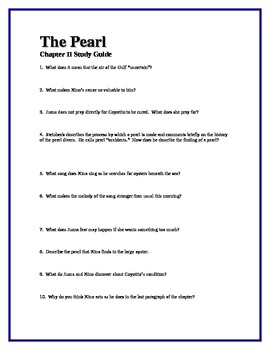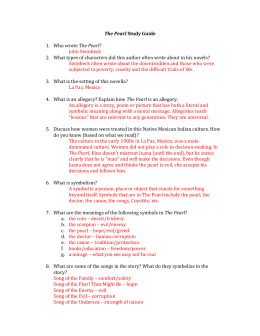Pearl By John Steinbeck Study Guide Questions

Discuss Steinbeck’s use of foreshadowing in The Pearl. At every turn, Steinbeck provides clues as to what will happen in the narrative, although sometimes his clues are obscure. For instance, Coyotito’s name, which means “little coyote,” hints at the fact that Coyotito is eventually mistaken for a baby coyote by the trackers. More concretely, in Chapter 2 the narrator discusses the native’s concept of “the Pearl That Might Be,” foreshadowing Kino’s discovery of “the Pearl of the World.” Additionally, Juana suggests that the pearl is evil long before it has visited its full measure of evil upon them.
Near the end of Chapter 3, Juana even suggests that the pearl will destroy their son, as it ultimately does. One important element of The Pearl is the contrast between fate and human agency, between the destiny that is made for us and the destiny that we make ourselves. How do these forces interact in Kino’s story? To what extent is Kino responsible for his own demise?
To what extent is fate responsible? The role of fate looms large in Kino’s undoing in two ways.
First, Kino’s downfall is incited by his accidental, divinely appointed discovery of the pearl. Second, Kino’s status as an impoverished fisherman who lives under the burden of colonial oppression also creates the sense that his tragedy is decreed by fate. The odds weigh heavily against his success, and it must be granted that, to some extent, society does conspire toward his downfall. At the same time, Kino is in large part to blame for his misfortunes.
The Pearl By John Steinbeck Chapter 1

His headstrong insistence on profit at all cost and his refusal to heed the warnings of his brother and his wife demonstrate his stubbornness and heedlessness; his excessive dependence on violence betrays a possible recklessness and poor judgment. Ultimately, Kino’s own shortcomings are the cause of the destruction of his happy family life.